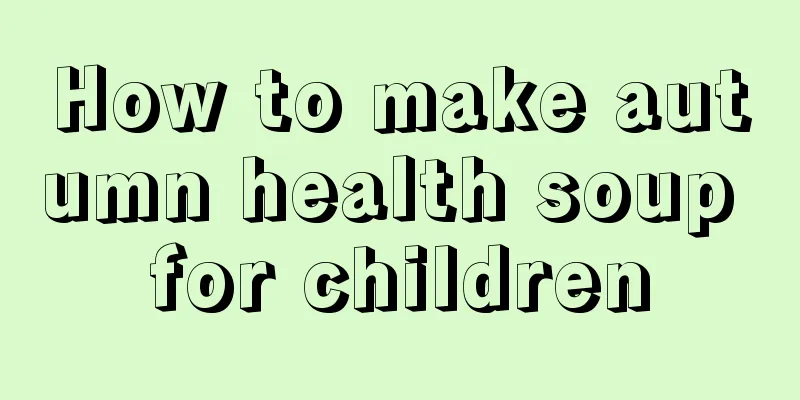What is the reason for a 2 month old baby to have green poop?

|
As adults, we usually don’t pay much attention to the color of stool, because adults’ gastrointestinal function is strong, so naturally there is no need to pay too much attention to it. However, when parents find that the baby’s stool is green and they haven’t felt anything unusual recently, they should consider that this situation is caused by dietary problems or gastrointestinal diseases.
The normal color of baby's stool is closely related to the baby's feeding method. For breastfed babies, normal stools are yellow or golden in appearance, with a uniform paste-like consistency, a sweet and sour smell but not smelly, and no obvious mucus. Occasionally there are granular curds or a slightly green color. For formula-fed children, the stools are light yellow or khaki in color, hard in texture, dry and formed, and often do not stick to diapers. If there is too much sugar in the milk, the stools will become soft and have a slightly corrupt smell. If your baby has green stools, there is no problem if the stool is light green. If the stool is dark green, it is mostly a sign of indigestion. It is recommended to give your baby some oral digestive medication. Generally speaking, the stools of breastfed babies are acidic, and normal stools are slightly green, sometimes mixed with some white particles. As long as the baby is feeding well, in good spirits, and gaining weight, this is normal. If a formula-fed baby has green stools, it means that the intestinal motility is accelerated or there is inflammation in the intestine, which is a symbol of diarrhea.
Green stools in babies are generally caused by the following reasons. Mothers should pay attention to compare and determine what causes the baby to have green stools, and prescribe the right medicine to choose a treatment method suitable for the baby. What is the reason for the baby's green stool? The reasons are: 1. Babies may spit up milk or have green stools if they catch a cold or have indigestion. If there is a bacterial infection, active treatment is required. If the test results are normal, the baby may have indigestion or a cold abdomen. 2. When the baby is not full, the baby's gastrointestinal motility is too fast due to hunger, so the bilirubin in the intestines has not been converted yet and is excreted from the stool, making the stool green and watery. 3. During the digestion process of fat, less bile is consumed, and the excess bile is excreted in the stool, making the stool green. If the mother thinks that the baby eats a lot, it means that he has indigestion, and she can give the baby some probiotics.4. If a baby who eats iron-containing milk powder cannot fully absorb the iron in the milk powder, his stool will be yellow-green, the white particles in the stool will be larger, and will be more likely to have a foul odor. 5. When babies first start eating vegetable puree, they often excrete a small amount of green vegetable puree in their stool. Some mothers often think that this is indigestion and stop adding vegetable puree. In fact, this phenomenon is common when healthy babies change their food. |
<<: The difference between hand, foot and mouth disease and chickenpox
>>: Sleeping time for babies over 2 months old
Recommend
What to do if children have tooth decay pain
Tooth decay pain is quite common in children. In ...
Reasons for a three-year-old baby to cough and vomit
The baby is still young and his physical quality ...
How to solve the problem of a five-year-old baby grinding his teeth while sleeping
The problem of five-year-old babies grinding thei...
Symptoms of cold stomach in baby
A cold stomach is also known as stomach cold. The...
What is the reason for the baby to have a mole
Everyone wants a flawless facial skin, without ac...
How to relieve stomach pain and nausea in children?
Children often experience gastrointestinal pain d...
What are the causes of sleepwalking in children?
I believe everyone has seen sleepwalking, which i...
What should you pay attention to when a five-year-old child loses teeth?
The happiest moment for a family is when their ba...
Treatment of baby's gum ulcers
Many parents will find that their children have t...
What to do if your child's nose bleeds
Children are very naughty and active. They are al...
What should I do if my 8-year-old child refuses to eat?
Parents attach great importance to children's...
What to do when your child loses a tooth
Children will change their teeth when they reach ...
What should I do if my baby has a sore throat?
Babies often have various diseases that give thei...
Baby's saliva is foamy
The presence of foam in the baby's saliva is ...
What should I do if my child has ringworm?
Dermatophytosis can occur in many parts of the hu...









